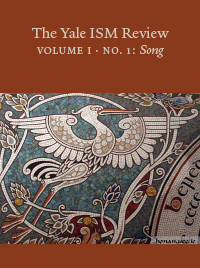Rita Ferrone, editor
When I was asked to give a talk for a group of musicians recently, my hosts came up with the topic: “Why sing? Why pray? Why bother?”
I never would have thought of that.
To me, singing is like breathing. I can’t imagine life without song, nor can I imagine life without communal sung prayer. But I am not in the majority. Increasingly, song that wells up from a community’s heart and shared life is an endangered species, needing careful tending if it is to survive. Church communities must present a convincing case for communal worship, and perhaps most especially for the assembly’s song. Creating an environment conducive to the flourishing of this profoundly human activity takes work; it cannot be taken for granted.
“I wish someone would write the elevator speech,” church musician Dale Adelmann once said to me, “to explain why those who don’t consider themselves singers should sing anyway.” The default assumption of many today is: “Singing is for singers” — an elite group who possess special skills — “but not for me.” And, if others are able to do it for me, why should I even try? Experts at the International Laboratory of Brain, Music, and Sound Research in Montreal put the number of people who have trouble singing at about 60%.[1] The situation is far different in traditional societies, where singing is practiced from the cradle.
Churches are perhaps the last bastion of communal song in American life. Consider how other streams of shared song have dried up: Singing in the family circle is out of fashion. It’s no longer common for parents to sing lullabies to their children. The National Anthem is sung by soloists at ball games. Even the birthday song has been replaced, in restaurants, by recordings or ditties barked out by the wait staff — with no participation by the patrons expected or required. Is it any wonder that congregational singing in church requires more effort and commitment, if it is to endure?
Yet singing together is a formative experience. It does something for people that can’t be gained in any other way. Its imprint goes deep. When memory fades and cognition falters, song remains.
In light of both the importance of communal singing and its fragility as a human art form, our inaugural issue of The Yale ISM Review is devoted to the theme of song.
Our issue opens with a poem by Chris Wiman. Tom Troeger, in his essay on critical standards for hymn texts, affirms that the beauty of song deepens prayer. From the perspective of human health, Mark Lazenby reminds us that singing is a bodily act with theological consequences. James Abbington describes Black spirituals as sacred folk song. And, finally, Nicholas Wolterstorff, by opening a window on work songs, offers fresh insights into the very nature of song in worship.
The psalms constitute a privileged body of song for those religious traditions formed by the Hebrew and Christian scriptures. Thus we have included three short essays on singing the psalms: Judah Cohen provides a reflection from a Jewish perspective, Paul Inwood from a Roman Catholic perspective, and Don Saliers from a Protestant perspective.
The biblical and mystical insight that creation itself sings to the glory of God prompts us to include two additional contributions. John Coburn’s Canticle of the Sun II incarnates the praises of creation as visual art. The floor mosaic of the Honan Chapel sings with the Three Young Men in the fiery furnace.
No less important than the question of why we sing or what we sing, however, is the cluster of issues concerning how we sing. How do we make it possible for assemblies to sing wholeheartedly and well? Ike Sturm reflects on the experience of eliciting song in worship from the perspective of a jazz musician. From the organ bench in Christ Church, New Haven, Tom Murray shows us how he leads song in a more traditional church setting.
The landscape of worship today is changing, as multiple musical styles and new technologies come into play. Three of our contributors help us to understand the challenges and opportunities of this time. In order for people to sing well, physical spaces have to cooperate. Scott Riedel charts the issues of acoustic design in constructing and renovating houses of worship. Emily Brink explores the ways in which new songs find a home across cultural boundaries, fostering relationships in a global church. Karen Westerfield Tucker carefully evaluates the “costs of extinction” of hymnals, those long-lived servants of communal song.
Each issue of the Review will conclude with “A Final Note.” This feature intersects with the theme of the issue from a different direction, inviting us to consider something we may not have noticed before. The final note in this issue belongs to the poet, Chris Wiman, who places before us the existential question: what has become of our voice?
To all our contributors: Thank you. To all our readers: Enjoy.
~November 19, 2014
FOOTNOTE
[1] James Dziezynski, “Singing in the Brain,” in Discover Magazine, July–August 2014, p. 28.
